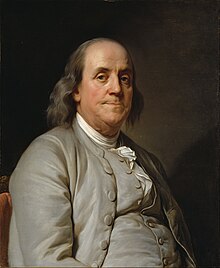
This is a summary history of diplomatic relations of the United States listed by country. The history of diplomatic relations of the United States began with the appointment of Benjamin Franklin as U.S. Minister to France in 1778, even before the U.S. had won its independence from Great Britain in 1783.
Contents
The information is drawn from official records of the United States Department of State. [1] This history encompasses the following information for each nation that the United States has recognized, or with which the U.S. has had diplomatic relations:
- Country name
- Date of establishment of a consulate in that country, or date of appointment of a consul.
- Date on which the U.S. recognized the country.
- Date of establishment of diplomatic relations with the country. This is often, but not always, the date of appointment of the first minister or ambassador.
- The date on which a legation or embassy was established in the country.
- The name of the first minister or ambassador to the country. In many cases, a chargé d’affaires was appointed first and represented the U.S. until an envoy was commissioned.
- The date on which diplomatic relations ended between the U.S. and the country.
- Additional notes on U.S. diplomatic relations with the country.